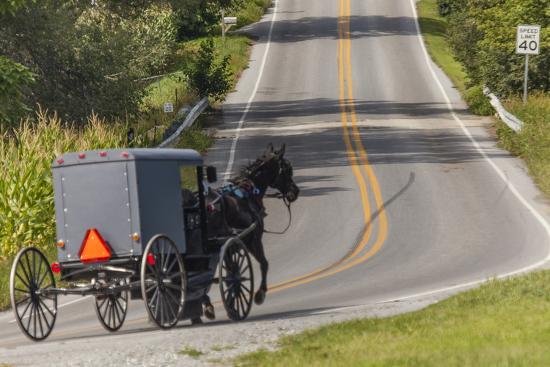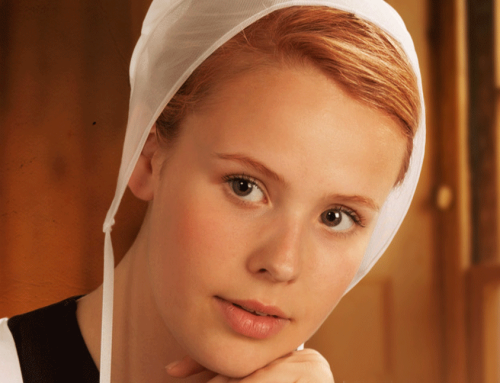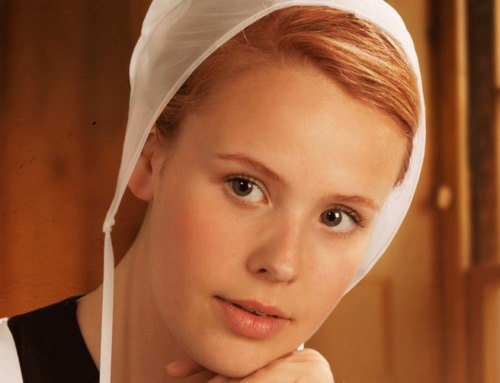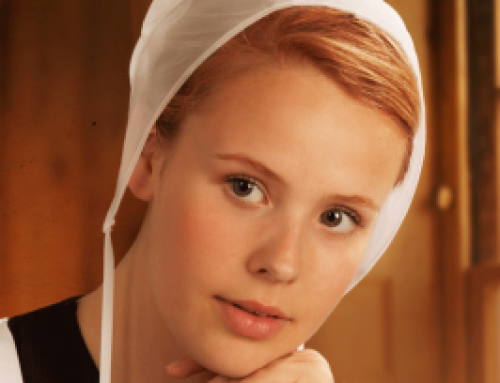Dear Jenny,
What is an Amish wedding like? Do you get married in a church or at home. Is there music and the traditional vows, or do you have a different way? I am very curious about this.
Debbie – Woodstock, New York
_____________________________________
I received this letter from a reader a few weeks ago. When I gathered the information I referred to my notes about my mama’s wedding. Of course, that was in 1946, and a lot has changed since then, but I thought you might like to see what we did at an “old-time” Amish Wedding. As you might imagine, an Amish wedding is quite different from an Englisch one.
Most Amish weddings used to be planned for November, after the harvest cycle was finished. One way the community knows there is a wedding being planned is when the bride’s mother plants a large bed of celery, sometime in late summer. Celery is one of the symbolic foods served at Amish weddings. Celery is also placed in vases and used to decorate the house instead of flowers.
By 8:30 on the morning of the wedding most of the community arrives. The guests pack the house and many more gather outside if there is no room. The Bride and Groom wear plain clothing and sit apart while the Armendiener (the Deacon) gives a sermon. She is often dressed in a light blue dress, instead of black. The people sing wedding hymns from the Ausbund, which is our hymnal, and then it is time for the vows. The couple comes forward. The minister asks whether they will remain together until death, and if they will be loyal and care for each other during adversity, affliction, sickness, and weakness. He then takes their hands in his and, while wishing them the blessing and mercy of God, tells them to “Go forth in the Lord’s name. You are now man and wife.” There are no rings or kisses exchanged.
Then the bride’s parents come to lead them in to the reception and the celebration goes on. The family moves the tables to seat the guests and the bride’s mother and her relatives bring out the feast. The newly married couple sits in the front corner of the room at the Eck table and are the first ones served. Ofter there are so many people in attendance that during the rest of the afternoon they might fill the reception room several times to feed all the guests. After the noon meal, there is singing. Then the Bride’s mother reminds her that it is time for “Going to The Table.” She appoints two married couples to oversee the tradition. They go to the unmarried women between sixteen and thirty and invite them to sit in one of the large upstairs bedrooms. The men go out to the barn where they stand around joking and visiting. The Bride and Groom go out to the barn and talk to the young men, trying to convince them to go into the house and upstairs where the girls were waiting.
One by one the young men go upstairs and ask their favorite girl to ‘go to the table.’ The couples hold hands as they come down the stairs and sit at the long table. Meanwhile the older folks are sitting on benches throughout the house. From time to time the group will break into a hymn. While they are singing the Bride’s parents pass around candies, fruits, cookies, and small pieces of cake. The singing might go on for hours until finally the young marrieds leave the table. Then the unmarried couples leave the table and go into the barn and talk. The Bride and Groom see to it that every unmarried person over the age of sixteen has a partner for the evening table. Tradition allows anyone who does not wish to take part to go home and then the Bride and Groom lead the couples in a procession into the house. Gaslights gave off their soft glow as the home resonates with the laughter and songs of the guests.
The Bride and Groom do not leave on a honeymoon, but often spend the night at her parents home. They do not take up housekeeping right away, but for the rest of the winter they make visits to their friends and neighbors where they receive gifts. With the help of their families, the Groom might spend the winter working on a house for them.
I hope that helps. My mama, Jerusha, had a very traditional wedding and when Jonathan and I were married we tried to follow the old ways as closely as possible, even though he had only recently converted to our faith. For an Amish girl, her wedding is one of the high points of her life, but what makes it most special is that her family and friends all pitch in to make it a wonderful day, especially her mama.
I hope this column is helpful,
Blessings
Jenny
*Jenny Hershberger is a fictional character from the Apple Creek Dreams series by Patrick E. Craig. To find out more about Jenny’s career as a writer, read Jenny’s Choice, the latest novel from Patrick E. Craig.[/fusion_builder_column][/fusion_builder_row][/fusion_builder_container]





I love to read Amish fiction. Most of the books I have read (over 140) are quite believable, the authors have done their homework. I have some Amish friends here in Maine and know about their lifestyle. I am very enamored with their lifestyle.